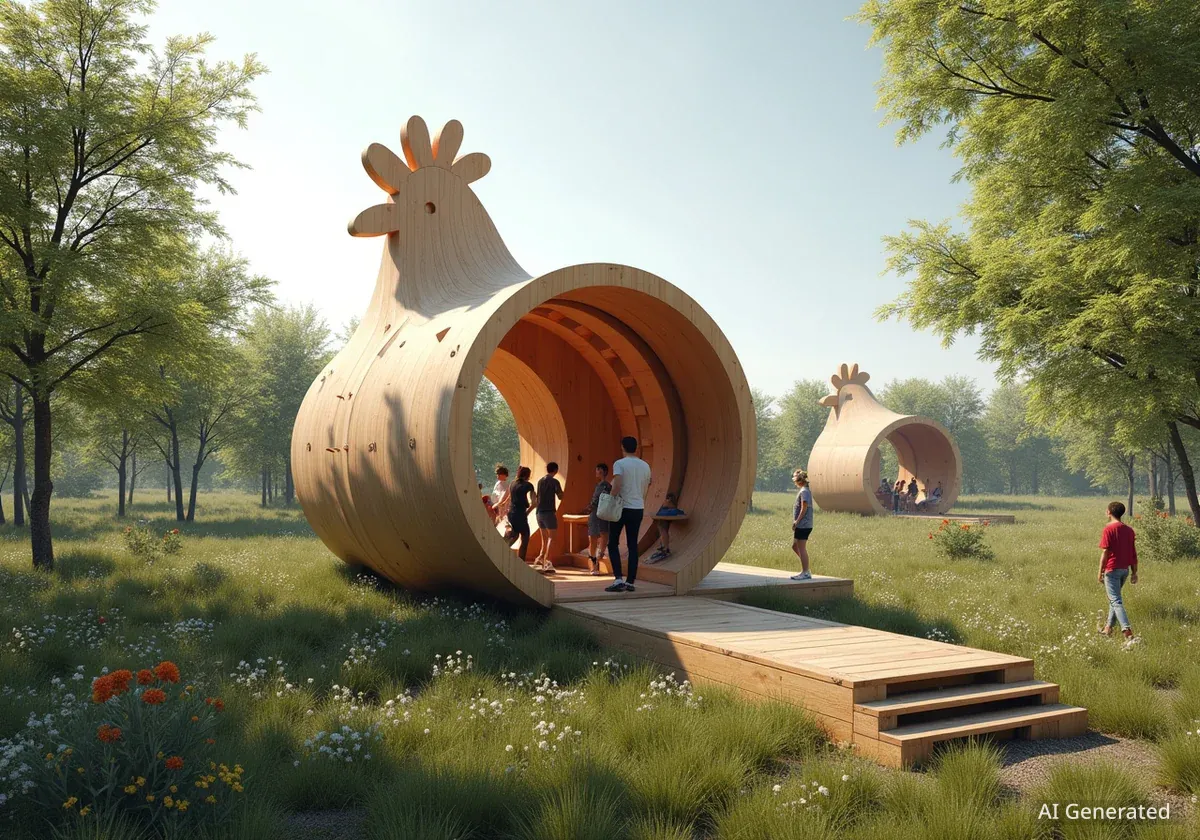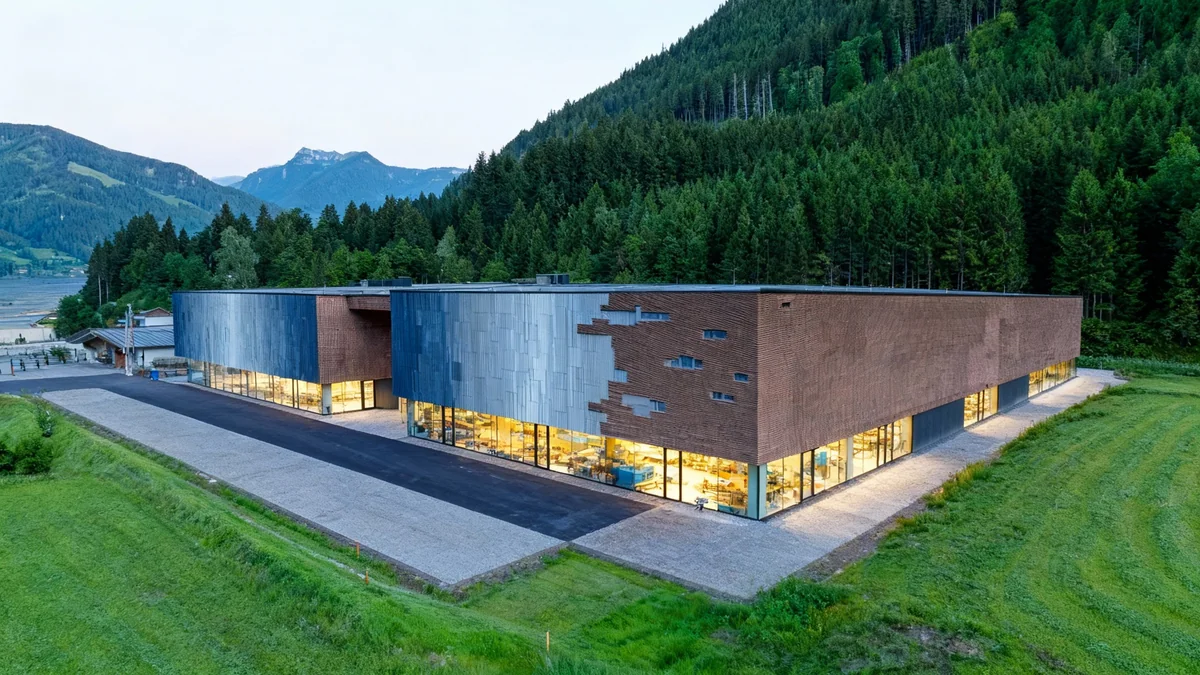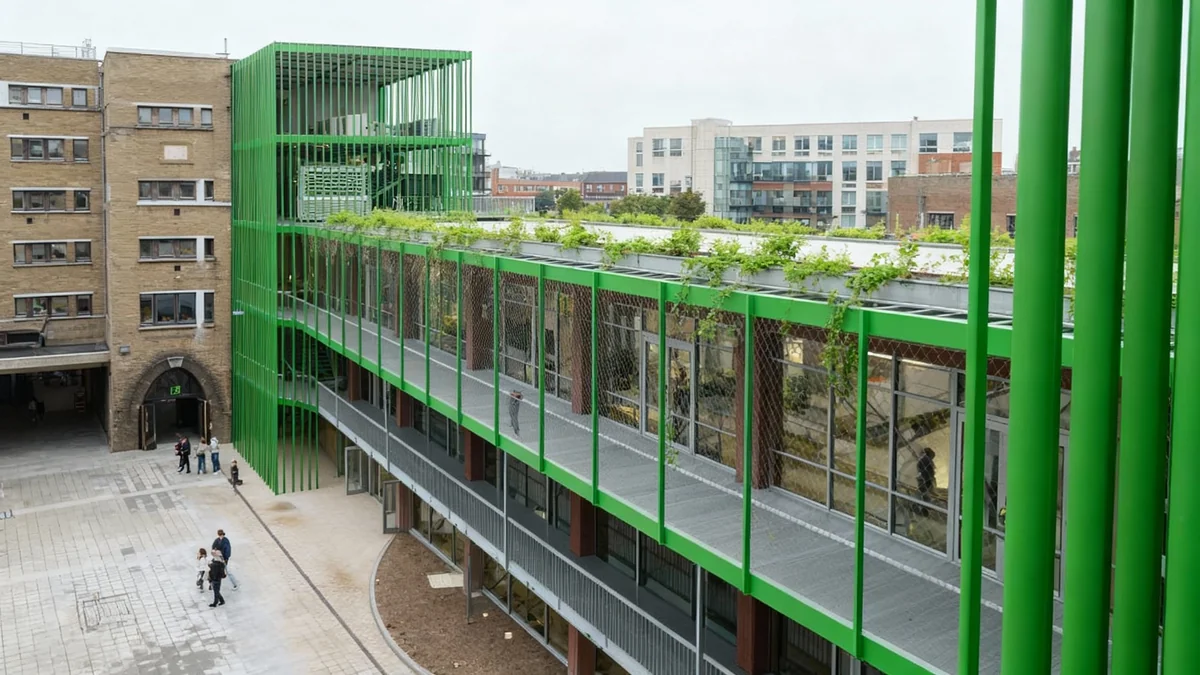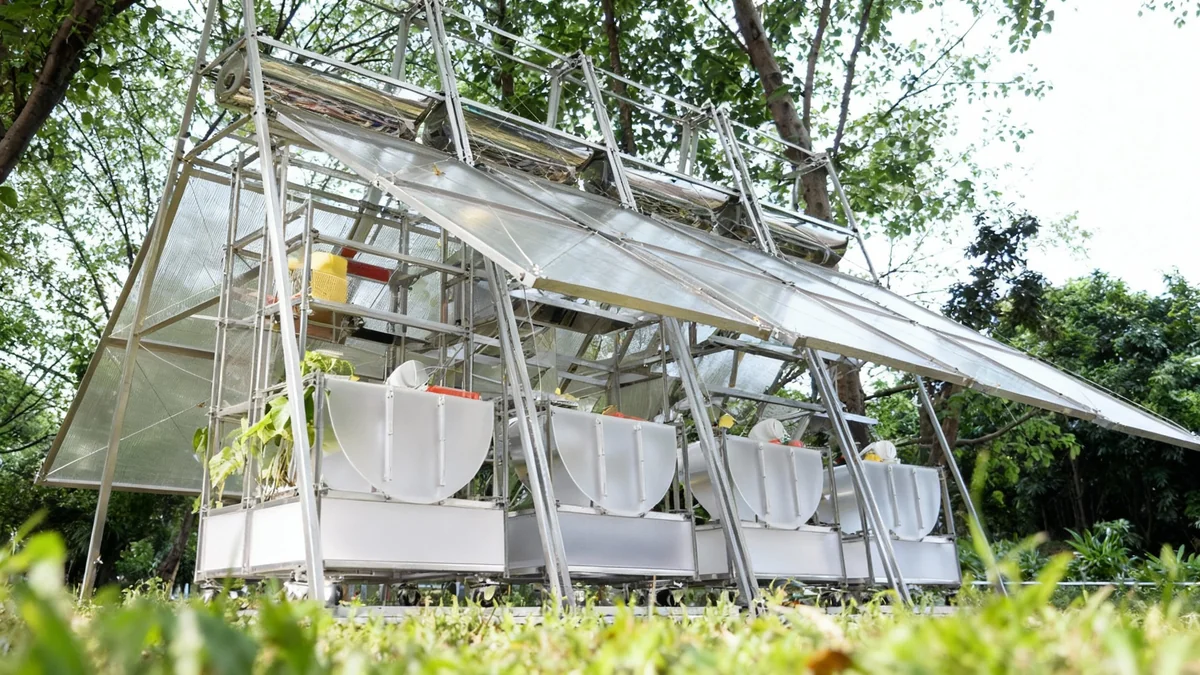Česká Kamenice, Czech Republic – The annual Cabin Fever festival and architecture summer school in the Czech Republic recently concluded, featuring five unique pavilions designed to be both playful and functional. These installations, including a chicken-shaped observation deck and a geometric classroom, offered communal shelters under the theme of 'Quality Time – Connection to Each Other'. The event, held from July 23 to 31, 2025, brought together students and architects to create sustainable, socially engaged projects.
Key Takeaways
- Cabin Fever 2025 featured five innovative pavilions in Česká Kamenice, Czech Republic.
- The installations served as functional shelters and observation decks.
- The theme 'Quality Time – Connection to Each Other' emphasized light, space, and human experience.
- Architects and students collaborated on sustainable, community-focused designs.
- Notable pavilions included 'The Chicken', 'Živa', 'Loom', 'The Splinter', and 'Eclosion'.
Annual Festival Focuses on Sustainable Design
Organized by the Hungarian architecture studio Hello Wood in partnership with window company Velux, Cabin Fever 2025 took place on the grounds of a former textile factory and wartime labor camp. The festival's core mission is to unite students and architects. They work together to develop projects that are both sustainable and community-focused. This approach aligns with Hello Wood's broader philosophy.
The 2025 edition specifically explored how light and space influence human experience. It placed importance on presence, intimacy, and connection within architectural design. According to Hello Wood, this collaboration with Velux highlights a shared belief. They both agree that responsible building is crucial for the future. This means creating spaces with care, awareness, and natural light. Such spaces offer meaningful alternatives in a world often described as overstimulated.
Event Details
- Dates: July 23 to 31, 2025
- Location: Česká Kamenice, Czech Republic
- Organizers: Hello Wood (Hungarian architecture studio) and Velux (window company)
- Theme: Quality Time – Connection to Each Other
The Chicken: A Whimsical Observation Deck
One of the most notable installations was 'The Chicken', designed by Mjölk Architekti. This pavilion served a dual purpose: a shelter and an observation deck. Its design aimed to reflect the life of a chicken. The exterior of the cabin was covered in straw, providing a habitat for insects and birds. Inside, visitors found a resting place.
Red windows protruded from the interior, offering unique views of the surroundings. The event organizers highlighted the pavilion's playful form. They stated that it reminds us that design is not only about straight lines. It can also bring joy, curiosity, and a deeper connection to the world around us. This installation showcased how architecture can combine functionality with creative expression.
"Its whimsical form is a reminder that design is not only about straight lines – it can also bring joy, curiosity, and a deeper connection to the world around us," the event organizers stated.
Živa: A Classroom Where Nature Meets Learning
Arthur Mamou-Mani designed the 'Živa' pavilion, a raised geometric structure. This pod was envisioned as a space where nature and learning could meet. Its intricate geometric form reflected the balance and harmony found in the wild. The mossy surroundings invited quiet reflection, creating a serene environment for visitors.
Set against a backdrop of forestry, 'Živa' functioned as an intimate classroom. It was specifically intended to provide a collaborative environment for those who visited. This design emphasized the integration of natural elements into a space dedicated to education and interaction. The pavilion aimed to foster a deeper appreciation for both learning and the natural world.
Architectural Philosophy
Hello Wood's approach emphasizes a "design-build" methodology. This means students and architects are directly involved in the construction process. This hands-on experience helps them create projects that are not only aesthetically pleasing but also socially relevant and sustainable. The collaboration with Velux underscores the importance of natural light in creating healthy and inspiring environments.
Loom: A Tribute to Textile Heritage
Architect Zak Underwood's 'Loom' installation paid homage to the site's rich textile heritage. The structure was adorned with yellow fabrics, visually connecting it to the history of the former factory. Positioned on a raised platform, 'Loom' created a sheltered seating area. This area was framed by timber columns and beams.
These structural elements were designed to reinterpret the mechanics of a traditional loom. Cabin Fever organizers described 'Loom' as both a shelter and a symbol. They noted it was a tactile reminder of craft, memory, and transformation. The pavilion served as a physical link to the site's industrial past, while offering a modern, functional space.
The Splinter: A Retreat for Solitude and Connection
Design studio Entropic created 'The Splinter', an angular cabin with a distinctive red finish. This retreat was designed to balance solitude with connection, and ruggedness with comfort. Its purpose was to offer a place where visitors could unwind, share stories, and truly connect with nature. The design featured an angular form that stood out in the landscape.
At the front, wooden blocks formed steps leading up to a raised doorway. Beyond this entrance, the cabin offered a warm and inviting sheltered space. Irregularly placed square windows allowed natural light to enter, enhancing the inviting atmosphere. 'The Splinter' provided a cozy sanctuary for reflection and interaction.
Eclosion: Weaving Through Space and Time
The 'Eclosion' pavilion, designed by Dorottya Kiss and Matthew McArthur, featured a network of wooden pieces. This angular structure incorporated intricate, woven elements. These details drew inspiration from the site's history of textile craft, manufacturing, and even the cocoon of a spider. The design aimed to create a sense of continuous flow and transformation.
The event description for 'Eclosion' suggested an immersive experience. It stated, "While you visit this site, you are constantly being woven through the fabric of space and time: you become part of the ever-changing fabric of the site." This pavilion invited visitors to consider their place within the historical and natural context of the location. The photography for all these installations was provided by BoysPlayNice, capturing the unique essence of each design.




